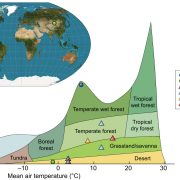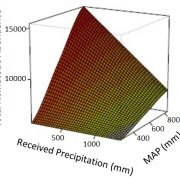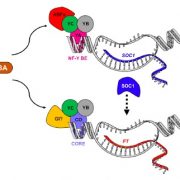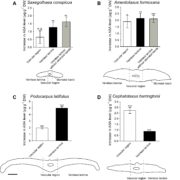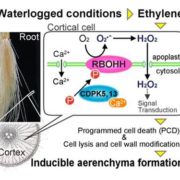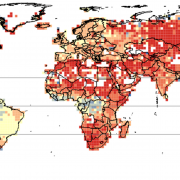The halophyte seashore paspalum uses adaxial leaf papillae for sodium sequestration (Plant Physiol.)
 Global warming and intensive farming are increasing soil salinity, which is predicted to affect 30% of cultivated land by 2050. Salinity represents a major threat for agriculture as most crops drastically reduce their growth and productivity in saline environments. Understanding the strategies used by halophytes (salt-tolerant plants) and transferring them to glycophytes (salt-intolerant plants) could be a means to improve crop yield in saline soils. For example, unraveling the mechanisms underlying the capacity of the salt-tolerant Paspalum vaginatum to survive near the seashore could be valuable to improve the performance of salt-sensitive maize and sorghum, belonging to the same subfamily (Panicoideae), in response to high salt concentration. Spiekerman and Devos investigated the differential response to salinity of two closely related panicoid species – P. vaginatum ‘HI10’ and P. distichum ‘Spence’ – showing increased and decreased growth under saline conditions respectively. Both accessions contain dense rows of papillae on the adaxial leaf epidermis. However, detailed morphological analyses revealed that ‘HI10’ forms larger papillae. Beside the proposed function as Na+ sinks, these big epidermal structures could also regulate water loss via transpiration by hiding stomata. The authors used the CoroNa Green fluorescent dye to measure the Na+ content in peeled papillae and found a significant increase in fluorescence in ‘HI10’, but not in ‘Spence’, in response to salt treatment, suggesting an association between salt tolerance and the ability to sequester Na+ in specialized leaf epidermal structures. This study paves the way to the biotechnological application of halophyte-specific mechanisms to improve salt tolerance in crops. (Summary and image adaptation by Michela Osnato @michela_osnato) Plant Physiol. 10.1104/pp.20.00796
Global warming and intensive farming are increasing soil salinity, which is predicted to affect 30% of cultivated land by 2050. Salinity represents a major threat for agriculture as most crops drastically reduce their growth and productivity in saline environments. Understanding the strategies used by halophytes (salt-tolerant plants) and transferring them to glycophytes (salt-intolerant plants) could be a means to improve crop yield in saline soils. For example, unraveling the mechanisms underlying the capacity of the salt-tolerant Paspalum vaginatum to survive near the seashore could be valuable to improve the performance of salt-sensitive maize and sorghum, belonging to the same subfamily (Panicoideae), in response to high salt concentration. Spiekerman and Devos investigated the differential response to salinity of two closely related panicoid species – P. vaginatum ‘HI10’ and P. distichum ‘Spence’ – showing increased and decreased growth under saline conditions respectively. Both accessions contain dense rows of papillae on the adaxial leaf epidermis. However, detailed morphological analyses revealed that ‘HI10’ forms larger papillae. Beside the proposed function as Na+ sinks, these big epidermal structures could also regulate water loss via transpiration by hiding stomata. The authors used the CoroNa Green fluorescent dye to measure the Na+ content in peeled papillae and found a significant increase in fluorescence in ‘HI10’, but not in ‘Spence’, in response to salt treatment, suggesting an association between salt tolerance and the ability to sequester Na+ in specialized leaf epidermal structures. This study paves the way to the biotechnological application of halophyte-specific mechanisms to improve salt tolerance in crops. (Summary and image adaptation by Michela Osnato @michela_osnato) Plant Physiol. 10.1104/pp.20.00796


